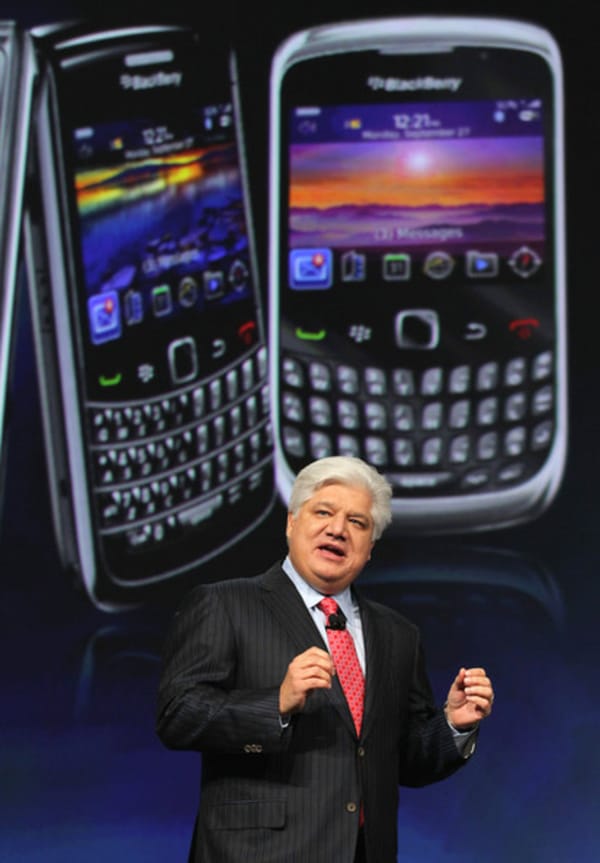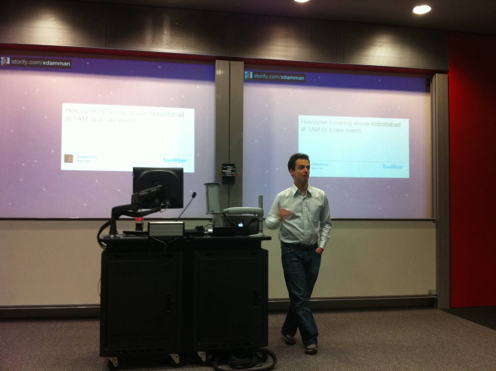How Apple’s iPhone stands in the current market, or: ‘How we Apples swim’
As the war between developers and consumers continues, Apple continues to dominate the applications market

Just before the BlackBerry service collapse on October 10, the analyst firm Enterprise Management Associates conducted extensive research regarding the trend in enterprise mobile device management. This research concluded that more than 30% of BlackBerry users from within large enterprises are expected to move to different platforms within a year as a result of poor user satisfaction. Despite the growing popularity of the device in UK teenage market (largely due to the success of the BlackBerry Messenger application, BBM, which allows users to avoid instant messaging costs), the recent BlackBerry “black out” will likely accelerate the decline of Research in Motion’s (RIM, the maker of the BlackBerry device) market share at enterprise level. The question is, can Apple’s iPhone and iOS platform can now take over BlackBerry’s piece of the marketplace following the death of its founder Steve Jobs, or will it instead follow Blackberry’s footsteps towards decline?
Recent statistics from Kantar Worldpanel ComTech news on smartphone operating systems’ market share has shown that while Nokia’s Symbian platform and RIM’s market share in major countries are declining, Apple’s iOS has failed to grasp the opportunity to expand. In fact, iOS have only made significant gains in US market share, while their market share in UK, Japan, Germany and France has dropped drastically. Conversely, the competing Android operating system has outperformed Apple iOS in every market, with Samsung, HTC, Nokia and Motorola as key players competing with iPhone for the smartphone market.
Still, Apple maintains its dominance in the mobile application store market. Figures from 2010 show the Apple App Store generated $1.8bn in revenue that year – 82.7% of the total market. Though the competing Android operating system is more popular than iOS, application developers are more satisfied with the Apple market’s ecosystem. A recent survey from US Yankee Group and Skyhook shows that developers were dissatisfied with the lack of regulation in Android application market, bemoaning the piracy that eats away from their profit. Another survey from research firm IDC and mobile software company Appcelerator showed that developers are shying away from Android, viewing the platform as still too fragmented, and seeking more reliable profits in the Apple market place. Statistics from Furry confirmed the view, in which out of 10,200 application projects developed in the 2nd quarter (Q2) of 2011, 72% were for Apple iOS while only 28% were for Android, indicating more development will take place on the iOS platform.
Apple still manages to rake in a high profit margin from their products
Apple dominates, too, in user satisfaction. A recent survey by J.D. Power and Associates ranked Apple above every other smartphone manufacturer in customer satisfaction, scoring highly in key areas of performance, ease of operation, features and physical design. A loyal fanbase is critical to Apple’s continuing success – as suggested by the Worldpanel report, both Apple and Android’s users are loyal when choosing upgrades, due partly to their investments in mobile applications.
With an increasing number of companies coming out with competitive smartphone devices, what differentiates iPhone from the rest of the pack will be its operating system. Here, Apple’s weakness in terms of flexibility is actually what contributes to their strength. While new customers might be moving away for lack of product variability, little integration with the Windows OS, and expensive application costs compared to Android, Apple still manages to rake in a high profit margin from their products. Their rigid combination of the iPhone hardware and iOS software ensures those qualities of performance, ease of use, and physical design, that result in such high approval ratings with their users. These features, complemented by a dominating and domineering App Store, which necessitates that all applications gain Apple approval before they are listed to buy, are the reasons behind why, according to Horace Dediu from Asymco, though Apple shipped only 5.6% of mobile phone units in the Q2 of 2011 that their share of Global Mobile market profit was about 66%.
Apple’s lost ground is therefore likely to be a result of their failure to attract new customers. Their much anticipated iPhone 5 release earlier this month is a prime example of the kind of failure that could see Apple fall lower in this area of the market: the presentation of a merely upgraded iPhone 4S did nothing to excite the non-initiate. The ultimate fate of iPhone and iOS depends on Apple’s ability to entice new customers, as well as retain its present ones. The increasing power of applications to sell devices, shown for one by BlackBerry Messenger’s securing of the teenage market for its host device, suggests a continuing need for the kind of innovation shown by Jobs. In the tug of war between the developer and consumer, whereby developer innovation to lead consumers fights consumer interest to prompt developers, the winner will be determined by its applications.









